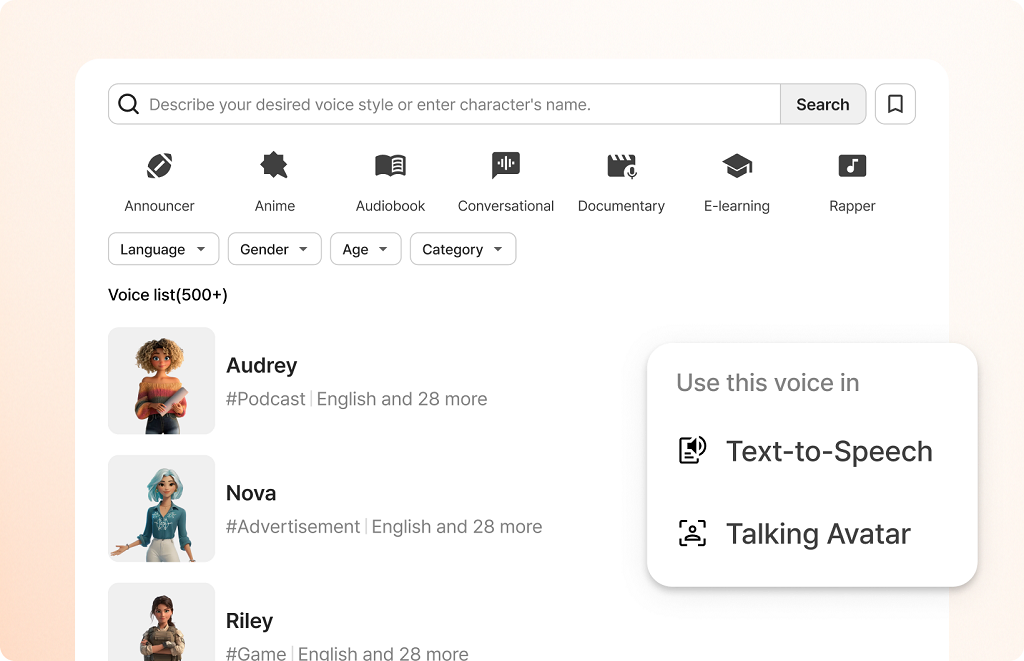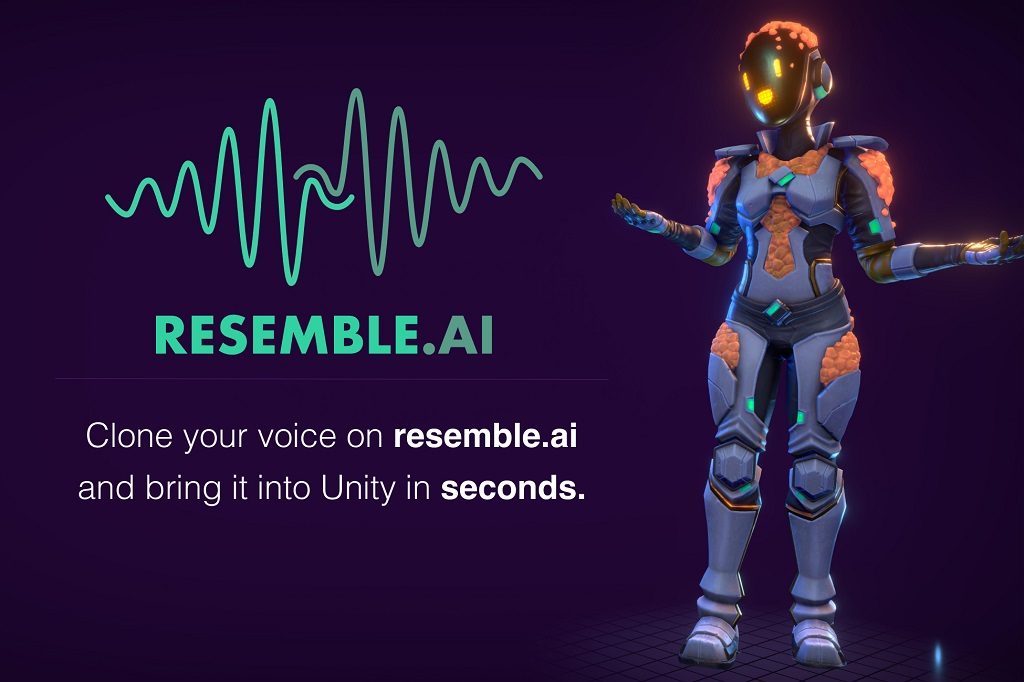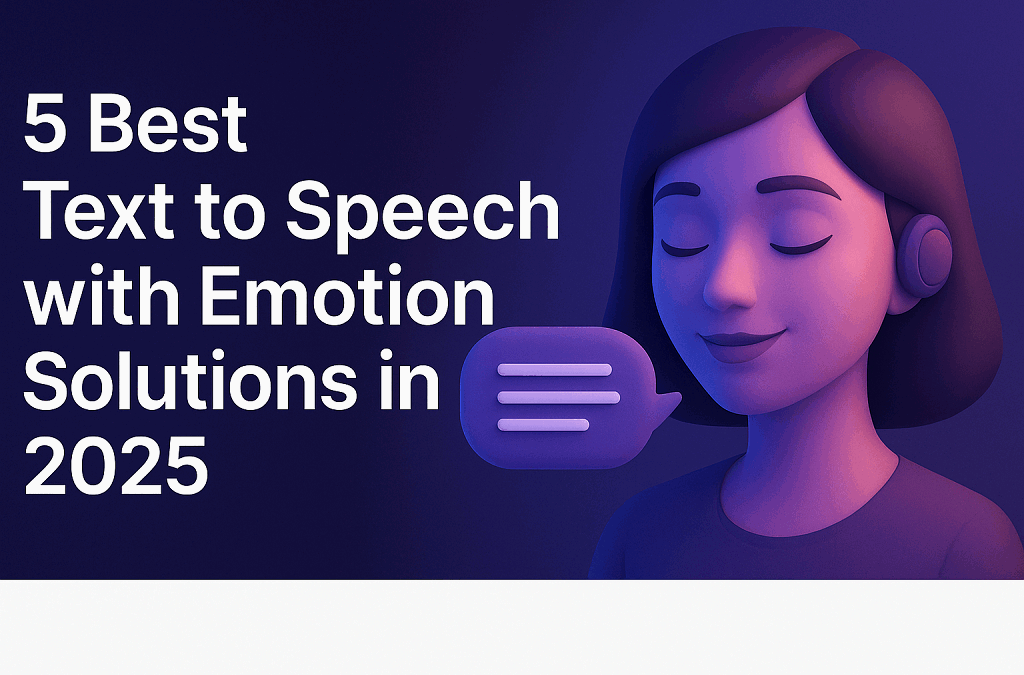Imagine a voice that doesn’t just read your words but actually feels them. That’s where text to speech with emotion has taken us in 2025 — AI voices that sigh in frustration, brighten with excitement, or soften into comfort. This shift isn’t just a neat trick for tech demos. It’s changing how creators build marketing campaigns, how game developers bring NPCs to life, and how virtual assistants connect with users on a personal level.
In this article, we’ll break down five of the most impressive solutions you can use right now. Each one will get a clear, human take — strengths, drawbacks, and where it truly shines. You’ll also see a side-by-side comparison table for quick decision-making, plus a look at a fully customizable route with Scrile AI for teams who need more than off-the-shelf options. By the end, you’ll know exactly which path fits your project’s voice — and its heartbeat.
Why Emotional TTS Matters in 2025
The leap from flat, robotic narration to emotion text to speech has made AI voices far more than a convenience — they’ve become a competitive edge. In 2025, brands, educators, and creators are turning to text to speech with emotion to connect with audiences in ways that plain audio never could.
Think of accessibility tools that read aloud with empathy, helping visually impaired users feel tone and context. Or interactive games where NPCs laugh, sigh, or sound genuinely scared. In online education, emotional TTS keeps students engaged for longer sessions. And yes — even in NSFW chat environments, realistic voice tones make interactions feel far more human and personal.
The demand is backed by numbers. According to industry reports, the global TTS market is projected to surpass $7 billion by 2028, with emotional AI voices driving a significant share of that growth. The reason is simple: when speech conveys feelings, people listen longer, trust more, and engage at deeper levels.
How Emotional TTS Works
Think about the last time you heard someone fake an apology. The words were fine, but the voice gave them away. That’s exactly what most robotic voices have sounded like for years — flat, functional, and forgettable. Emotional TTS tries to fix that by making AI talk like a human who actually feels something.
The trick isn’t magic, it’s detail. Developers feed AI thousands of real voice samples — laughter, frustration, hesitation, warmth. The system learns how tiny shifts in:
- Pitch (that lift when you’re excited)
- Pace (rushed when you’re thrilled, slower when you’re serious)
- Tone (soft for comfort, sharp for authority)
- Pauses (because silence can speak louder than words)
…can completely change the meaning of the same sentence.
In 2025, this tech isn’t just reading text. It’s shaping delivery the way a skilled actor would. It can make your AI sound like a friendly tutor, a tense game narrator, or — if you want — the voice in an NSFW chat that knows exactly how to play the part. That’s the real leap: not just speaking, but speaking with intent.
5 Best Text to Speech with Emotion Solutions
If you’ve ever listened to a robotic AI voice and thought, “Yeah… that doesn’t sound human,” you already know why emotional TTS matters. The good news? In 2025, we have more options than ever that don’t just read your words — they perform them. Below are five standout tools, each with its own personality, pricing, and quirks.
Typecast — Best for Creative Media with Diverse Emotional Presets

Typecast has carved a spot in the creative industry by giving content makers a toolbox that feels more like a stage than software. With 600+ voices and an advanced SSFM model, it delivers characters that laugh, whisper, or tremble just right. Whether you’re producing an indie game, an animated short, or an audiobook with drama, it’s one of the few platforms where “free text to speech with emotion” isn’t just marketing fluff — you can actually try it without paying first.
Key Features:
- 600+ voices in multiple languages
- Adjustable emotional presets like joy, fear, and sadness
- Real-time previews for instant feedback
- SSFM (Speech Synthesis Fine-tuning Model) for lifelike tone control
Pros:
- Huge library of voice options
- Strong emotional range without sounding artificial
- Works well for storytelling-heavy projects
- Generous free tier
Cons:
- Interface can feel crowded for first-time users
- Some niche languages lack emotional presets
Pricing & Free Plan: Free tier with limited exports; paid plans start around $8.99/month for more voices, faster rendering, and commercial rights.
Murf AI — Best for Professional Voiceovers & Commercial Use

Murf AI is like the clean, polished studio of emotional TTS tools — everything about it feels geared toward serious, professional output. It’s a favorite among ad agencies, corporate trainers, and video producers who need tts with emotion that still sounds sharp and brand-safe. Their Speech Gen 2 engine nails subtle shifts in tone — think “motivated” versus “inspired” — which makes a big difference in scripted work.
Key Features:
- Speech Gen 2 for precise emotion tuning
- Over 150 voices in 20+ languages
- Timeline-based editor for syncing with visuals
- AI-driven script-to-voice matching
Pros:
- Emotion control that feels granular, not generic
- Excellent for explainer videos, ads, and training content
- Built-in tools for pacing and emphasis adjustments
- Professional-grade audio quality
Cons:
- No truly free plan (only a short trial)
- Emotional presets are less exaggerated than in entertainment-focused tools
Pricing & Free Plan: Free trial for a few minutes of voice generation; paid plans start around $19/month, with commercial usage rights included.
LOVO AI — Best for Marketing & E-learning

LOVO AI positions itself as the storytelling partner for brands and educators. With a multilingual voice library and expressive styles designed for teaching, brand videos, and even customer service scripts, it’s built for clarity and engagement. Its ai voice with emotions engine is strong enough to carry enthusiasm in an ad spot and warmth in an onboarding video without sounding forced.
Key Features:
- 100+ languages supported
- Expressive styles for teaching, selling, and narrating
- API access for integration into LMS or marketing platforms
- Emotion sliders to fine-tune delivery
Pros:
- Versatile — works equally well for ads and education
- Wide language support for global campaigns
- Easy integration for large-scale content production
- Offers both pre-set and customizable emotion controls
Cons:
- Some voices feel too “clean” for creative storytelling
- Lower-tier plans limit access to advanced features
Pricing & Free Plan: Free version with watermarked exports; paid plans start around $10/month for high-quality, watermark-free audio and full commercial rights.
Play.ht — Best for Podcasters & Publishers

If you’ve ever tried to convert an article or script into audio and felt the result was… flat, Play.ht is the kind of upgrade you wish you’d found sooner. It’s loaded with a huge voice library and lets you mess with pitch, speed, and pauses until the delivery sounds like a real person telling a story. That’s why it’s a favorite in the podcasting and publishing world. It’s not just a text to speech emotion engine — it’s a full-on audio production sandbox.
Key Features:
- 200+ voices across 30+ languages
- Controls for pitch, speed, and pause placement
- Audio player widgets for websites and blogs
- Batch processing for multiple scripts
Pros:
- Voices that feel less “robot” and more “presenter”
- Flexible enough for news reads, narration, or casual chat tones
- Built-in player makes embedding audio dead simple
- Good for both short posts and long-form content
Cons:
- Free version limits downloads and customization
- Some voices still lean slightly toward the “AI” sound on longer passages
Pricing & Free Plan: Free tier lets you try it out but caps output; paid plans start at about $39/month, with commercial rights and more customization unlocked.
Resemble AI — Best for Voice Cloning with Emotional Nuance

Resemble AI takes the idea of emotional tts and adds a wild card: cloning your own voice, complete with emotional shading. This means you could train it to say anything in your voice — calm, angry, excited, even whispering — and it will sound disturbingly close to the real thing. The tool’s custom emotion tags give you frame-by-frame control over delivery, which is rare in this space.
Key Features:
- Real-time API for live emotion control
- Voice cloning from short audio samples
- Emotion tags for ultra-specific tone adjustments
- Support for blending synthetic and human recordings
Pros:
- Scary-good cloning accuracy
- Emotion tags make subtle delivery possible
- Works for games, interactive experiences, and custom assistants
- Real-time capabilities are a huge plus for dynamic content
Cons:
- Steeper learning curve for precise results
- Voice cloning may raise ethical or compliance questions
Pricing & Free Plan: Free plan includes basic TTS with limits; cloning and advanced emotion control start around $19/month.
Comparison Table — Quick Glance at the Top Picks
| Tool | Voices | Languages | Emotional Control | Best For | Free Plan |
| Typecast | 600+ | 60+ | Manual/presets | Creative projects | Yes |
| Murf AI | 150+ | 20+ | Precision sliders | Pro voiceovers | Yes |
| LOVO AI | 500+ | 100+ | Multiple presets | Marketing/e-learning | Yes |
| Play.ht | 200+ | 30+ | Pitch/speed control | Podcasts, publishing | No |
| Resemble AI | 100+ | 100+ | Custom emotion tags | Voice cloning | No |
Scrile AI: Build Your Own Emotional TTS

Off-the-shelf apps are fine when you just need a quick voiceover. But when you want a text to speech with emotion solution that’s truly yours — branded, monetized, and integrated with everything your business runs on — you need a custom build. That’s where Scrile AI steps in.
Scrile AI isn’t a generic SaaS subscription. It’s a custom development service that designs and delivers exactly what your use case demands. Whether you’re building a learning platform with lifelike voices, an NSFW chatbot with emotional nuance, or even a text to speech porn product that blends voice output with AI roleplay, the tools are shaped around your vision.
Here’s what you can have built:
- Real-time emotional TTS with natural tone shifts and contextual delivery
- AI character builder to give every voice a unique persona and backstory
- Group & private chat integration with instant audio generation
- AI-generated responses powered by LLMs for dynamic conversations
- Full moderation control to meet compliance and community guidelines
- Monetization options like subscriptions, pay-per-message, or premium content tiers
- Complete branding — interface, UX, and workflow logic all reflect your identity
Scrile AI also works seamlessly with existing ecosystems. You can integrate it with your CRM, analytics tools, or content library, so the voice output isn’t just realistic — it’s connected to your entire operation.
Instead of adapting your workflow to fit a fixed platform, Scrile AI builds a toolset that fits you. That’s the difference between renting features and owning the whole experience.
How to Choose the Right Emotional TTS
With so many text to speech with emotion tools on the market, picking the right one comes down to knowing what actually matters for your project. Start with variety — does the platform offer a wide range of emotional tones, or are you stuck with “happy,” “sad,” and little else? Voice quality is non-negotiable; if it sounds robotic, your audience will tune out.
Languages can be a deal-breaker if you need global reach, so check both coverage and accent authenticity. API access is another big one — without it, you’re limited to manual use instead of integrating voices into your apps or workflows. And finally, pay attention to licensing. Some services allow full commercial use; others don’t.
If a tool ticks these boxes and still fits your budget, you’re on the right track. The perfect choice should sound great, work anywhere, and fit seamlessly into your ecosystem.
⚖️ Emotional TTS Tools vs. Scrile AI
| Feature | Typecast | Murf AI | LOVO AI | Play.ht | Resemble AI | Scrile AI (Custom Build) |
|---|---|---|---|---|---|---|
| Voices | 600+ | 150+ | 500+ | 200+ | 100+ | Unlimited (custom-trained) |
| Languages | 60+ | 20+ | 100+ | 30+ | 100+ | Any (customizable) |
| Emotional Control | Presets + fine-tuning | Precision sliders | Presets + sliders | Pitch/speed control | Emotion tags | Real-time contextual + persona-driven |
| Best For | Creative projects, games | Ads, training, corporate | Marketing & e-learning | Podcasts, publishing | Voice cloning & interactivity | Branded platforms, monetization, full control |
| Free Plan | Yes | Trial only | Yes | Limited | Basic TTS only | N/A (custom dev) |
| Monetization Options | None | None | None | None | None | Subscriptions, PPV, premium voice chats |
| Branding | Vendor branding | Vendor branding | Vendor branding | Vendor branding | Vendor branding | 100% custom UI/UX, your brand only |
| Integration | Manual export | Editor-based | API | Website widgets | API | Full ecosystem: CRM, chat, analytics |
Conclusion
Text to speech with emotion surpasses machine narration. The world’s best tech puts depth, character, and realism in computer voices — and makes a great tool for content creators, tutors, marketers, game developers, and even NSFW chat. Your use may be to break the ice in a podcast introduction or to add drama to a game scenario or to liven up online lessons, but emotional TTS can radically change the way audiences respond to your content.
The five solutions we explored — Typecast, Murf AI, LOVO AI, Play.ht, and Resemble AI — each bring something unique to the table. From massive voice libraries to hyper-precise emotional control, there’s a fit for every need and budget.
For brands and projects that need more than a ready-made tool, Scrile AI delivers a fully customized, branded emotional TTS system tailored to your workflow — complete with integrations, monetization features, and total control. Contact the Scrile AI team of experts today and start building your solution.

Polina Yan is a Technical Writer and Product Marketing Manager, specializing in helping creators launch personalized content monetization platforms. With over five years of experience writing and promoting content, Polina covers topics such as content monetization, social media strategies, digital marketing, and online business in adult industry. Her work empowers online entrepreneurs and creators to navigate the digital world with confidence and achieve their goals.


Murf’s Speech Gen 2 nails subtle vibes (motivated vs inspired). For ads, the restraint is perfect. Typecast is my pick for theatrical reads; Murf for polished brand spots. Nice matrix—super practical.
Resemble’s emotion tags are powerful, but the learning curve is real. Pro tip: build a small internal “style guide” of tag combos per persona. Also—any benchmarks on real-time API latency under load?
Typecast’s presets are a lifesaver for NPC dialog. I can dial “anxious → hopeful” in minutes and it just works. Curious: has anyone chained Typecast with real-time branching in Unity without wrecking latency?
Loved your point about empathy in accessibility. Emotional TTS isn’t fluff—tone helps convey intent for blind users. Please add a section on WCAG/SSML best practices next time (prosody tags, say-as, break strength, etc.).
Voice cloning is amazing and risky. If you test Resemble, lock down consent + storage policies (GDPR/CCPA), watermark outputs, and restrict prompts. Ethical guardrails should be part of any “Best Of” list in 2025.
We moved our article-to-audio pipeline to Play.ht last quarter. The pitch/speed/pause control makes hosts sound like… actual hosts. Only gripe: long-form narration still tips into “AI” if I don’t hand-place pauses.
LOVO AI has been great for lesson modules. The “warm/explainer” style keeps students engaged way longer than flat VO. I do wish the lower tiers unlocked more emotion sliders though.